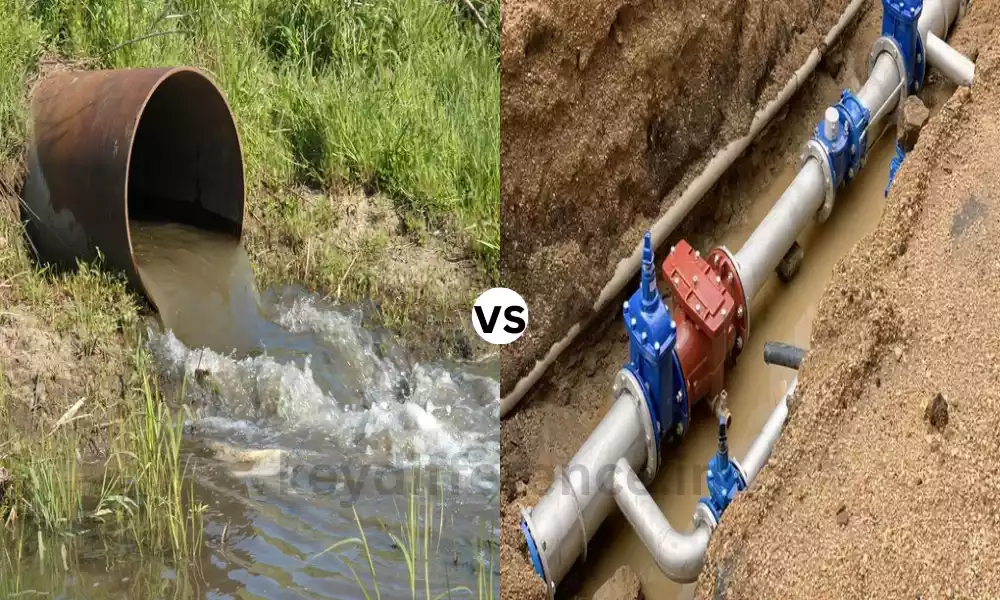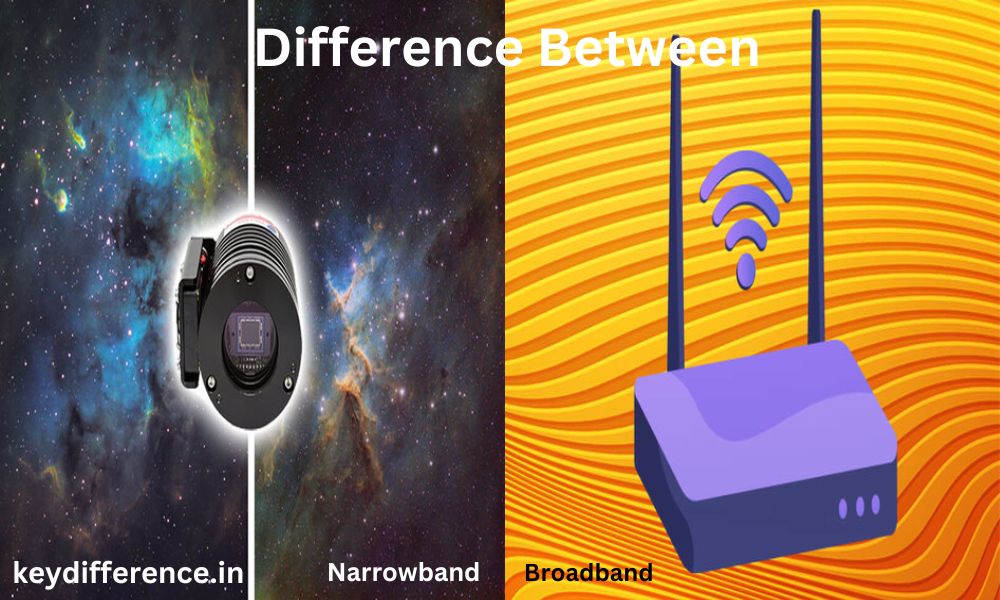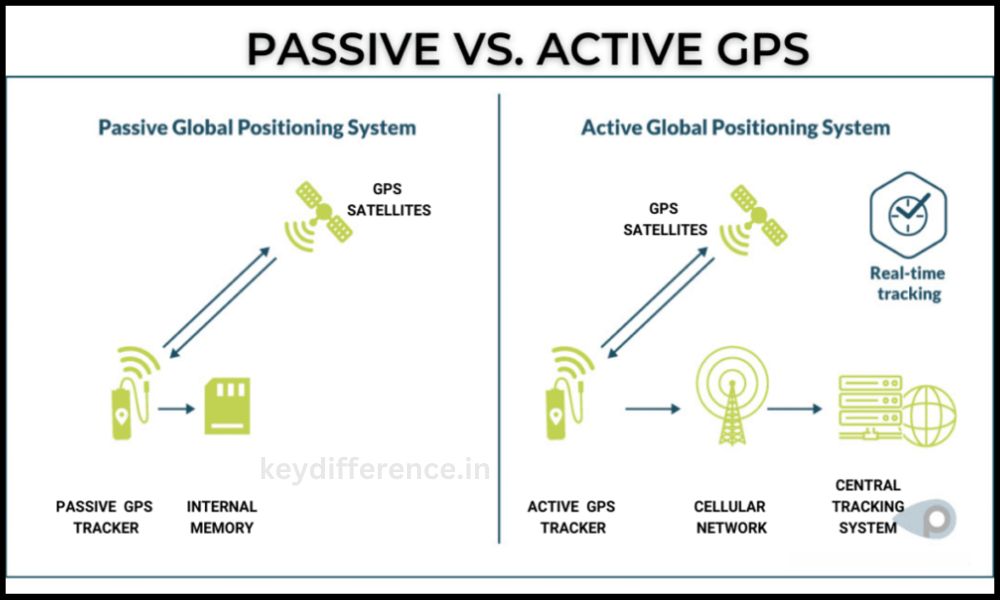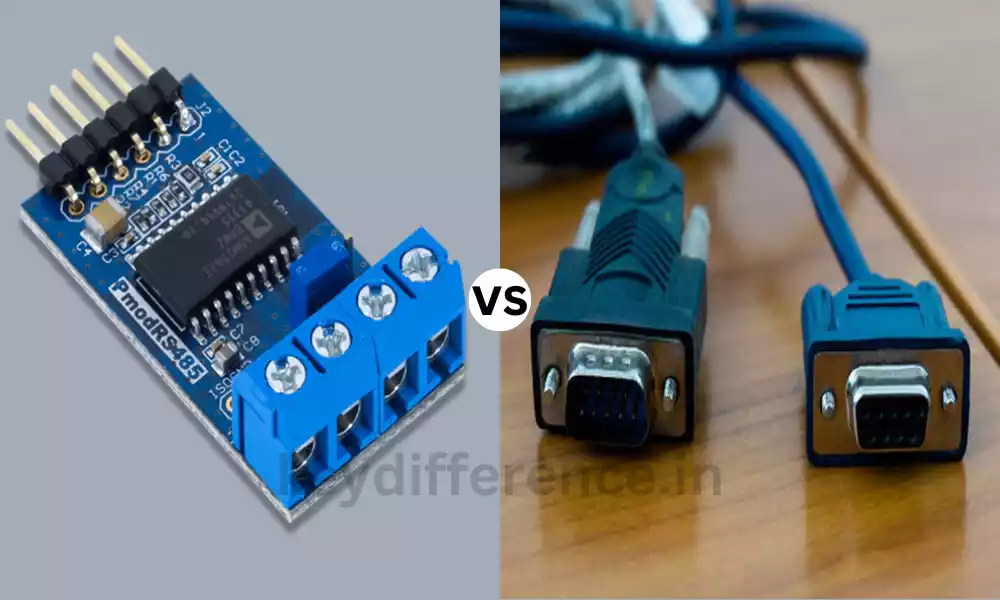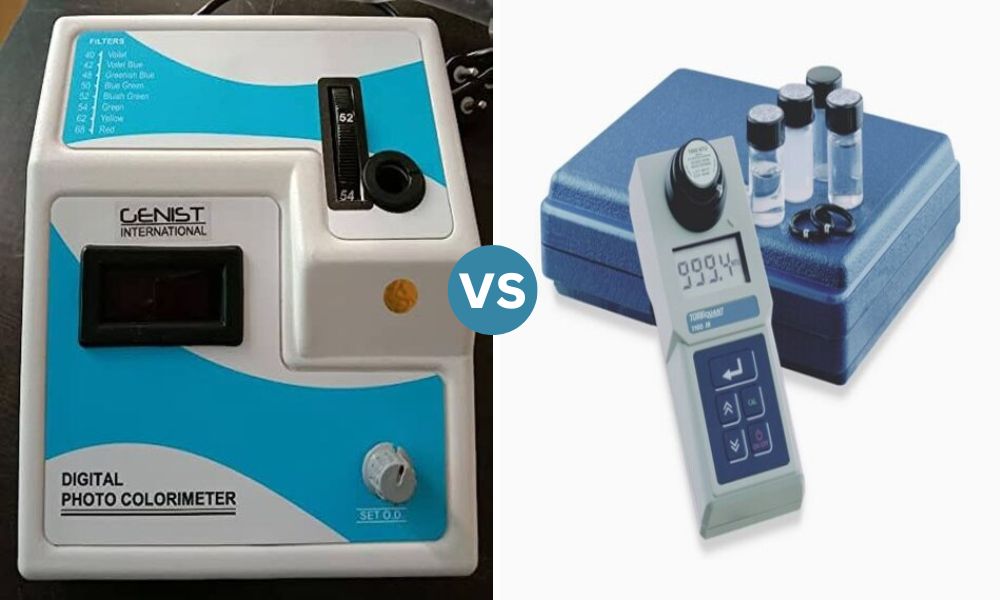The Sewage and Drainage systems are key elements of the urban infrastructure, often interspersed but distinct in terms of their functions and composition. Both involve the movement of materials but they serve different objectives and have different environmental impacts.
Understanding the fundamental differences between drainage and sewage is essential for efficient management, and environmental protection in addition to public health. This review examines the differences between them, examining their sources, compositions of pollution, their management, and their effects.
What is Sewage?
Sewage is the term used to describe a mixture of waste and other chemicals that are produced by various sources, including industrial, household, and commercial establishments.
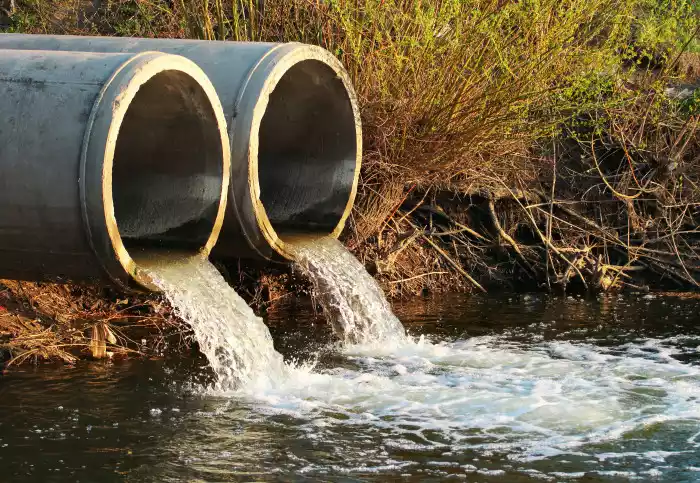
It is typically comprised of water from sinks, toilets showers, sinks, and other household activities, together with organic material, chemicals, and possibly harmful pathogens. Sewage needs to be treated properly prior to recycling or disposal to avoid environmental pollution and protect the health of people.
What is Drainage?
Drainage refers to the method or procedure of the removal of excess water from an area, usually the land surface, using either artificial or natural means. It is the process of managing surface water, like melting snow or rainwater to avoid accumulation and flooding.
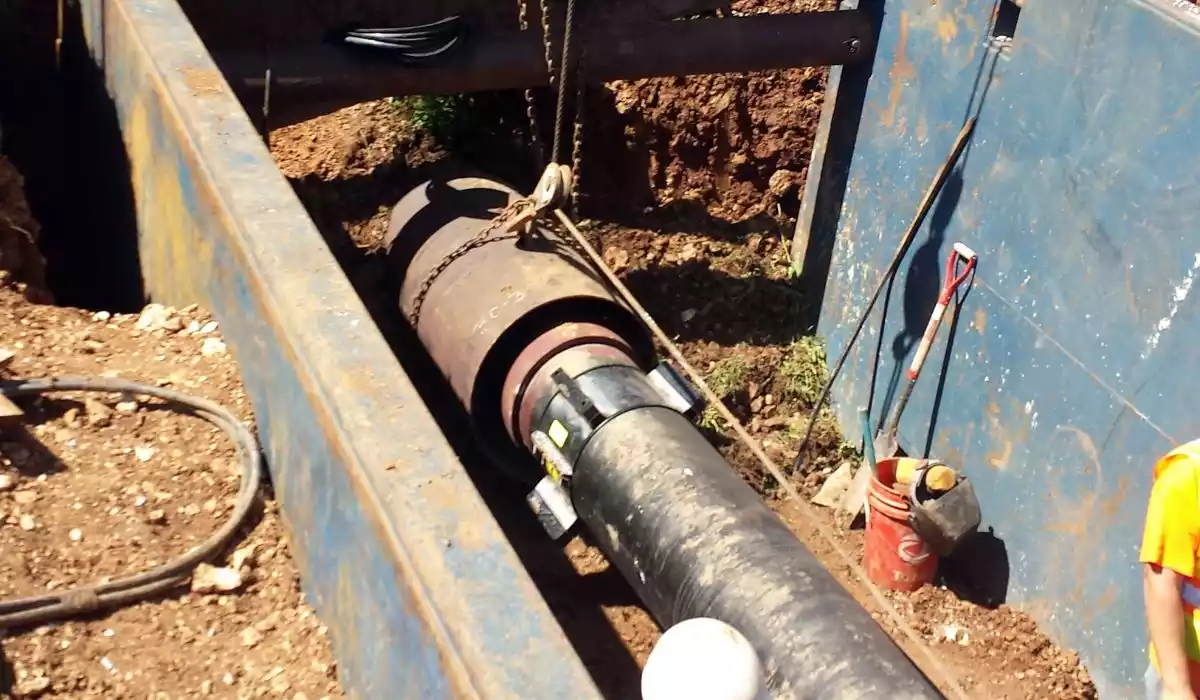
Drainage systems are designed with a variety of techniques, including pipes, surface channels, and underground networks which aim to divert water from certain areas in order to ensure soil stability, avoid erosion, and reduce the risks associated with water.
Importance of understanding the differences between Sewage and Drainage
Understanding the difference between drainage and sewage is essential for many reasons:
- Public Health: The distinction between drainage and sewage assists in implementing appropriate sanitation measures. Understanding the sewage system can help manage human waste and pollutants that carry disease thereby reducing health risks. In addition, understanding drainage can aid in preventing waterlogging and reducing the breeding ground for disease vectors such as mosquitoes, thus protecting the health of the public.
- Protecting the Environment: The sewage system is often contaminated with environmental pollutants such as pathogens and chemicals. Knowing the difference helps in the implementation of appropriate treatment measures to minimize environmental pollution. However managing drainage aids in stopping soil erosion, maintaining natural habitats, and conserving the water quality in the lakes, rivers, and oceans.
- Construction of Infrastructure: Knowing the differences helps in the design and development of reliable infrastructure solutions. Proper management of sewage involves treatment plants as well as sewer systems, whereas drainage systems require well-designed pipelines or channels to regulate the flow of water. Understanding these distinctions can aid in the efficient use of resources for infrastructure development.
- City Planning: The distinction between drainage and sewage is essential in urban planning. This information is used to influence building regulations, zoning rules, and plans for disaster control. It also influences decisions about residential zones, industrial zones, and green spaces for proper sewage treatment and efficient drainage systems.
- Mitigating Risks: Understanding the differences between HTML0 and HTML0 can help in implementing better risk-reduction strategies. It assists in preventing waterborne illnesses by controlling sewage. It also lowers the chance of flooding or water-related disasters by maintaining effective drainage systems.
Understanding the differences between drainage and sewage is vital for promoting public health, protecting the environment, improving the development of infrastructure, arranging urban spaces, and minimizing possible risks associated with water management.
Comparison Table of Sewage and Drainage
Certainly! Here’s a comparison table outlining the key differences between sewage and drainage:
| Aspect | Sewage | Drainage |
|---|---|---|
| Definition | A mixture of wastewater, human waste, chemicals, pathogens | System/process of removing excess water from an area |
| Composition | Contains organic matter, human waste, chemicals, pathogens | Consists primarily of excess rainwater, snowmelt, surface water |
| Sources | Residential, industrial, and commercial areas | Primarily natural sources and precipitation |
| Purpose | Carries waste for proper treatment before disposal or reuse | Manages excess water to prevent flooding and erosion |
| Treatment | Requires treatment before safe disposal or reuse | Often doesn’t require treatment before dispersion |
| Infrastructure | Involves sewer systems, treatment plants | Includes drainage networks, channels, pipes |
| Environmental Impact | Potential pollution of water bodies, health hazards | Helps prevent flooding, erosion, and water-related risks |
| Health Implications | Can pose health risks if not properly managed | Minimizes the risk of waterborne diseases |
| Urban Planning | Influences zoning regulations, city infrastructure planning | Affects urban design, disaster management plans |
This table outlines the distinct characteristics of sewage and drainage, highlighting their differences in composition, sources, purposes, environmental impact, and implications for urban planning and public health.
Types of Sewage
Types of Sewage Treatment Systems Available (Setters/Farmers/Operators).
1. Domestic Sewage: (also referred to as Sanitary or Municipal Wastewater) comes from households, businesses, and public facilities such as schools and hospitals and typically contains human waste, bath and laundry water waste materials, and any waste produced during daily activities as part of its makeup.
2. Industrial Sewage: Industrial sewage comes from manufacturing, commercial, and industrial activities like chemical processing, food production, and mining activities that generate wastewater, including chemical processing operations and mining activities. Industrial Sewage can contain any variety of Organic and inorganic Pollutants including heavy metals, Solvents, and toxic Chemicals which must be Neutralized before Discharge into the Environment is Possible.
Types of Drainage
There are various kinds of drainage systems, such as:
1. Surface Drainage: Surface drainage involves using ditches, swales, and open channels to collect and channel stormwater runoff from streets, parking lots, or any impervious surface into natural waterways or designated areas for disposal.
2. Subsurface drainage: Subsurface drainage involves using perforated pipes or similar underground structures to collect and transport excess groundwater or liquid away from an area.
3. French drains: French drains are subsurface drainage systems consisting of perforated pipe wrapped with geotextile fabric and filled with gravel that gather and remove excess water away from buildings or other structures.
4. Retention Ponds: Retention ponds are artificial basins designed to collect and hold stormwater runoff before slowly dissipating it either into the soil or by evaporation over time.
5. Infiltration trenches: Infiltration trenches are shallow excavations filled with permeable materials like gravel or perlite that allow stormwater to percolate into the soil and recharge groundwater aquifers.
6. Green Roofs: Green roofs are vegetated roof systems designed to absorb and retain rainwater, thus decreasing stormwater runoff that needs to be managed through other drainage systems.
Components of Sewage
Waste water may consist of various components depending upon its source and level of treatment; some common ones being:
1. Water: Up to 99% of wastewater contains water as its principal component, coming from various sources including household use, industrial processes, or rainwater harvesting.
2. Organic Matter: Organic matter refers to any living or once-living matter found in wastewater such as feces, food scraps, and plant material that provides essential nutrition to microorganisms that play an essential part in treatment processes.
3. Nutrients: Nutrients present in sewage can encourage algae and aquatic plant growth in receiving waters, leading to water quality problems and ultimately leading to lower overall quality for everyone involved.
4. Pathogens: Pathogens are Disease-causing Microorganisms Commonly found in Wastewater systems such as bacteria, Viruses, and parasites that pose serious threats to human health if left Unchecked and Poorly Dealt with.
5. Chemicals: Sewage can contain many toxic substances that pose risks to both environment and public health if left unmanaged, including pharmaceuticals, cleaning products, and industrial pollutants. Failure to manage such materials properly could have devastating results on human health as well as environmental sustainability.
6. Solids in Sewage: Sewage contains solid materials of both an organic and inorganic nature, such as human waste, food scraps, or even grit, that need to be processed during its treatment process to create more refined wastewater products.These solids may be removed during drainage’s purging phase to produce cleaner wastewater products for discharge to nearby bodies of water or treatment processes.
Components of Drainage System
Drainage systems consist of various components depending on their purpose and design, but some common ones include:
1. Inlets: Inlets are openings in pavement or other surfaces designed to collect stormwater for draining into drainage systems. They may capture runoff from different sources like curbs, gutters, or parking lots.
2. Pipes: Pipes serve as the main conduits for transporting stormwater in drainage systems, typically made of various materials like concrete, plastic, or metal and designed to transport it over short or long distances.
3. Catch Basins: Catch basins are underground structures designed to capture and temporarily store stormwater runoff. Connected directly to pipes, these catch basins capture stormwater before transporting it downstream, often trapping sediment or debris before sending the remaining flow off further downstream.
4. Detention Basins: Detention basins are large ponds or basins designed to store stormwater for an extended period before gradually discharging it back into the environment, helping reduce the volume and velocity of runoff while simultaneously decreasing flooding risks and erosion concerns. Detention basins help minimize these potential issues through flood management measures as they hold back runoff from entering streams that otherwise flood our cities, thus decreasing flood risks as well as erosion risks.
5. Grates and Covers: Grates and covers serve to protect inlets and catch basins from debris that could clog their systems, providing easier access for maintenance personnel as well as users alike. Grates may even be designed as removable modules to simplify access for easy maintenance access.
6. Erosion Control Measures: Erosion control measures such as riprap, vegetation, and retaining walls can help protect drainage systems against erosion while simultaneously helping preserve land stability in surrounding areas. They may also filter stormwater runoff to improve water quality.
Health and Environmental Impacts of Poor Sewage Management
Faulty sewage management can have lasting health and environmental ramifications; here are a few of its more prevalent effects:
1. Water Pollution: Untreated or improperly treated sewage may contain high concentrations of pathogens, nutrients, and pollutants that contaminate waterways and alter their quality, impacting aquatic life as well as recreation opportunities and possibly endangering human health if consumed or exposed directly through skin contact. This poses significant environmental and human health hazards.
2. Disease Transmission: Pathogens found in sewer waste such as bacteria, viruses, and parasites can spread disease to both people and animals if left untreated and discarded appropriately. Some Examples include cholera, Typhoid fever, Hepatitis A Infection, and Giardiasis which have all been known to spread via Wastewater Disposal Systems.

3. Environmental Damages: High concentrations of nutrients found in sewage waste such as nitrogen and phosphorus can promote algal blooms and deplete oxygen, leading to fish kills as a result. Pollutants also pose threats to wildlife habitat degradation and harm wildlife populations.
4. Contamination of soil: Improperly managed sewage can pollute soil, potentially endangering public health if used for agricultural or residential uses.
5. Air Pollution: Poor waste Management can Contribute to Emissions of Greenhouse gases such as Methane and Carbon Dioxide that cause Climate Change.
Poor sewage management can have profound repercussions for public health, the environment, and the economy alike.
Therefore, efficient treatment and disposal practices must be employed to minimize negative consequences on these aspects. In turn, this protects human and environmental well-being and improves public health outcomes.
Health and Environmental Impacts of Poor Drainage Management
Poor Drainage Management Can Have Serious Health and Environmental Consequences Improper drainage management can have detrimental health and environmental consequences, including those listed here:
1. Floodwater can damage homes, businesses, and infrastructure due to improper drainage; additionally, it contains contaminants like sewage and chemicals which pose health threats for both humans and animals alike.
2. Erosion: Poor drainage can result in soil erosion, leading to sediment entering waterways and endangering aquatic environments. Erosion may also damage infrastructure like roads or bridges as well as create safety risks.
3. Water pollution: Poor drainage can allow pollutants, including oil, chemicals, and sediment into our waterways which harm aquatic life and limit recreational opportunities. Furthermore, polluted water poses risks to human health if consumed or exposed directly on skin surfaces.
4. Disease Transmission: Standing water left from inadequate drainage can provide the perfect conditions for mosquito breeding grounds to spread diseases like malaria, dengue fever, and Zika virus.
5. Property Damage: Poor drainage can damage homes, businesses, and infrastructure leading to expensive repairs and potential property damages.
6. Air Pollution: Poor Drainage can contribute significantly to air pollution in urban environments, Where runoff from pavement picks up Pollutants such as Nitrogen oxides and Particulate matter that end up Released back into the Atmosphere through Runoff from Pavement Surfaces.
Inadequate drainage management can have severe negative consequences on public health, the environment, and the economy. Effective design, construction, and maintenance practices for drainage infrastructure must be implemented to minimize these adverse effects and protect human and environmental well-being.
Future Considerations and Developments
Future Considerations and Developments Looking forward, several considerations and developments that could significantly reshape sewage and drainage management are possible. Below are several potential areas of focus.
1. Climate Change: Climate change could result in more frequent and intense storms that increase flood risks and disrupt drainage systems, alter precipitation patterns and water availability patterns, and impact the treatment and disposal processes of wastewater systems.
2. Emerging contaminants: Concern is growing regarding emerging contaminants like pharmaceuticals, personal care products, and microplastics that enter sewage and drainage systems through dumping sites and may pose potential health and environmental threats. Future developments may focus on improved detection and removal methods of such threats.
3. Innovative Technologies: There exists an opportunity for innovative technologies to advance sewage and drainage management, from improved treatment technologies that could enhance efficiency to green infrastructure solutions that could enhance drainage while mitigating pollution.
4. Urbanization: With cities experiencing sustained and exponential expansion, their infrastructure requires increasing amounts of sewage and drainage systems that meet growing urban demands. Future developments should look to enhance existing systems as well as develop new ones to accommodate expanding cities’ populations.
Wastewater and Drainage Management will remain key areas of focus in terms of public health, Environmental Protection, and Infrastructure Development in the Coming decades. Research, Development, and Innovation will remain Essential in meeting any Emerging challenges to these systems that threaten their Effectiveness and Sustainability in these Endeavors.
Conclusion
Understanding the differences between drainage and sewage is essential. Sewage is a source of pollution and wastewater that requires treatment to reduce health and environmental risks.
Drainage controls excess water to prevent flooding and preserve ecological balance. Understanding these distinctions is essential to ensure effective administration, development of infrastructure as well as for public health and protection of the environment.

